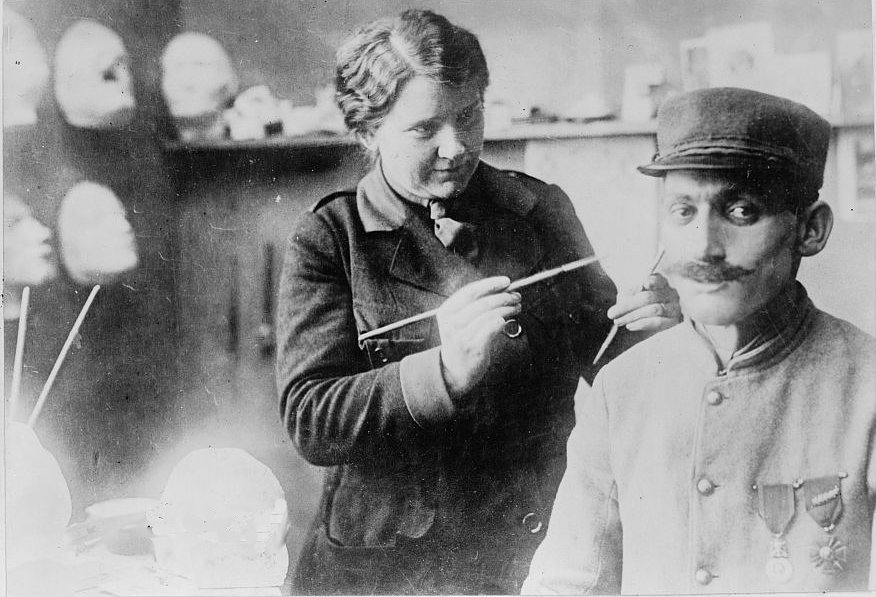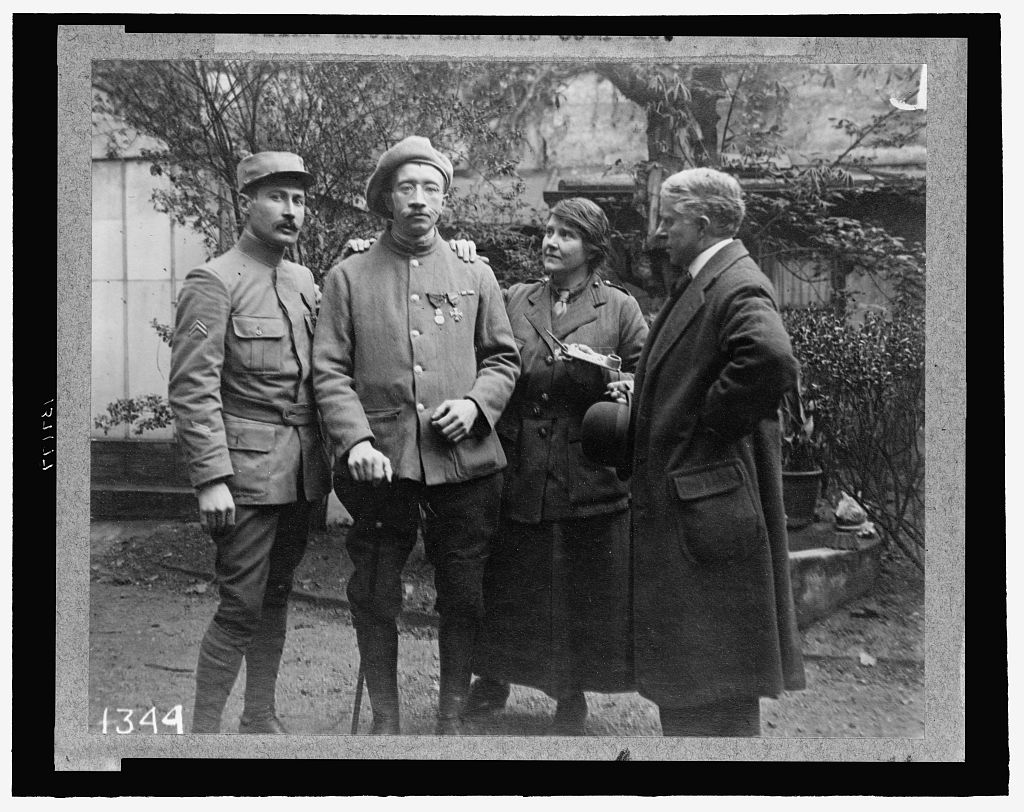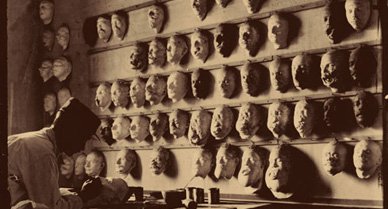In the 2:00 section today, we briefly discussed the popularity of masks for soldiers who suffered facial injuries as a result of numerous traumas in the Great War. From what I could gather based on my research, it was a relatively small but very impactful field. Soldiers faced a long journey after an injury as new medical techniques resulted in higher survival rates, but survival could come with severe scarring. While medical techniques were improving, they were far behind where we are today and the facial reconstruction field aced constant challenges when treating soldiers. Previously, the field was almost exclusively focused on returning function and form to soldiers’ faces with little focus on appearance. Sir Harold Gillies became a leader in the field of facial reconstruction as he was among the first to put an emphasis on the aesthetic portion of plastic surgery for soldiers by working with artists to imitate a man’s face before his injury. While his work was revolutionary for the time and he made a significant impact, he was limited in how much he could do for a patient. As writer Allison C. Meier puts it “medicine had not caught up to the advancements of war,” which I found to be an incredibly interesting comment on how war disrupts normal life and catches everyone, in every line of work, off guard and forces them to adjust accordingly.
Because of these medical limitations, artists began creating masks for soldiers with facial deformities to help them cope with life after the war. A facial disfigurement was considered the most traumatic result of service during the war and, as one can image, there were a great deal of psychological factors accompanying it. The Masks for Facial Disfigurement Department was created by Francis Derwent Wood, an artist who wanted to help patients he met while working as an orderly at the 3rd London General Hospital. His work consisted of metallic masks, modeled to resemble a soldier’s face before injury, were designed to be lighter and more permanent than the rubber prosthetics. Wood believed his masks could offer the same psychological benefits as plastic surgery for those veterans whose injuries were too severe for surgery because they had an opportunity to regain their confidence. Wood was followed by Anna Ladd, who spoke with Wood and went onto open a Studio for Portrait Masks in Paris; Ladd had even more successful artistic results than Wood. Tremendous effort went into these masks by both Wood and Ladd’s teams as one mask could take a month to make. Ladd created hand-painted copper masks, with a process beginning with a plaster cast being taken and slowly transformed into a thin mask weighing between four and nine ounces(depending on if the mask covered half or all of a patient’s face) held in place by spectacles. Some of Ladd’s most famous techniques are painting the mask while a man was wearing it so she could get as close to his skin color as possible and using real hair to create details like eyebrows, eyelashes, and mustaches. Ladd created 185 masks, and while there is not specific number, one can assume Wood created even more as his department was open longer and his masks did not take as long to make; unfortunately, their impressive work does not even come close to treating all facial injuries suffered in the war. While a mask could not restore function or allow for expression, soldiers expressed immense gratitude for the comfort they found in hiding their injuries. The masks created by both Wood and Ladd represent society’s attempt to recover from the the Great War; people did not want to look directly at the cost of war and the men who actually fought did not want their reflections to be a constant reminder of the horror. My summary does not even come close to providing all the information on this, but I hope this gives a little more background on it for some people! If you are interested in looking into it further, there are a lot of great articles on the topics, starting with the ones I cite below.



P.S. My rabbit hole on this topic started because Dr. Scanlon’s description of the masks made me think of Phantom of the Opera and I wanted to know if there was an relation between the two as I was uncertain of when Phantom was first written. Phantom of the Opera was written in 1925, so about 7-8 years after Wood and Ladd produced face masks for wounded soldiers. The idea of the phantom’s mask hiding something terrifying is a sad context to view the reception of the masks in as it is further proof the wounded could never really fit back into society and probably faced the same feelings of societal exile as the phantom does.
Works Cited
Alexander, Caroline. “Faces of War.” Smithsonian.com, Smithsonian Institution, 1 Feb. 2007, https://www.smithsonianmag.com/arts-culture/faces-of-war-145799854/.
Meier, Allison. “How Masks of Mutilated WWI Soldiers Haunted Postwar Culture.” JSTOR Daily, JSTOR, 19 Nov. 2018, https://daily.jstor.org/how-masks-of-mutilated-wwi-soldiers-haunted-postwar-culture/.
